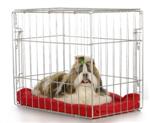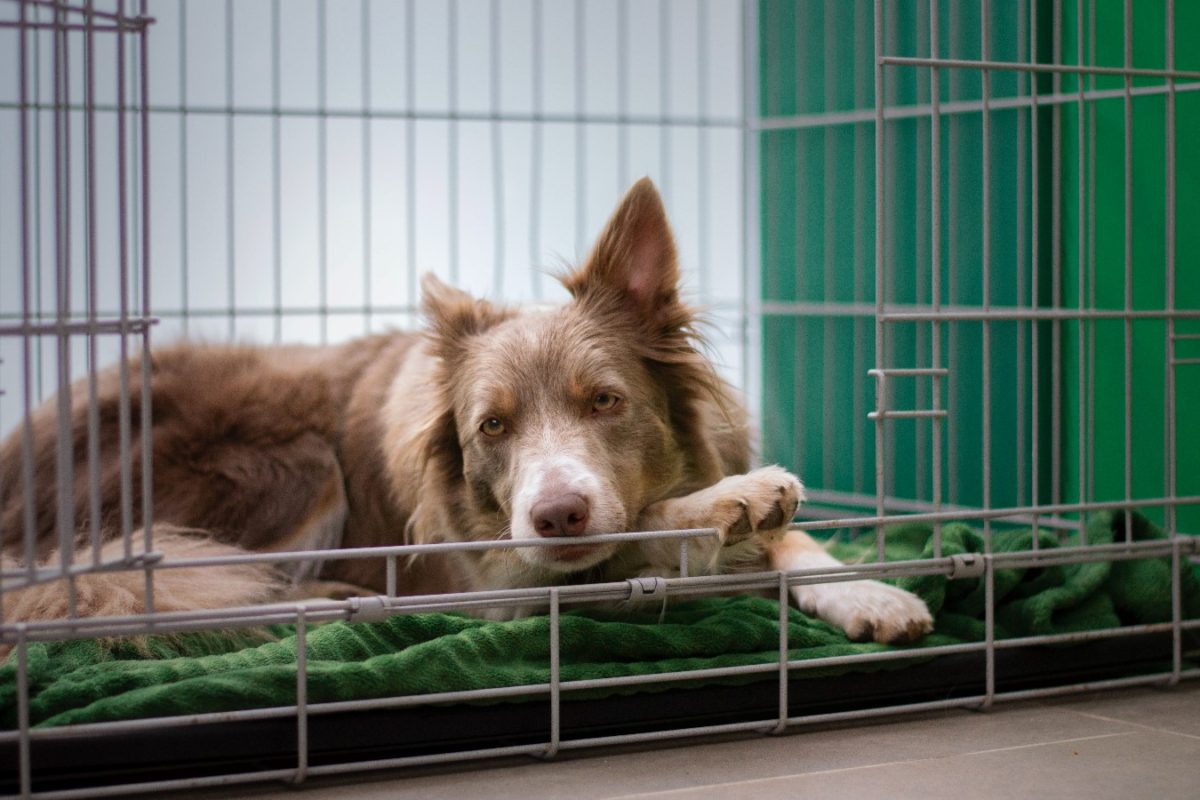Bringing a new pet home can be both exciting and scary. Whether your dog was bought as a puppy or adopted as an adult, crate training helps to establish important routines, provide discipline, aids in house-breaking, and prevents inappropriate urination and other problems that can lead to difficult and hard to remove pet odors. Crate training is especially useful for working families or those who need to leave their pet in a secure place for several hours at a time.
A common guideline for how long you can safely crate your dog is to take how many months old they are and add one—this gives you the number of hours they can be crated. For example, a 2-month-old pup should be crated for no longer than three hours at a time. For older dogs, you’ll need to become familiar with the limits of their bladders before you crate them for too long. Upon release, take the dog directly to their potty area so they know just where to go.
Crate training is as beneficial for the dog as it is for the family, and to do this correctly there are five things to keep in mind:
Create a Desirable Den – The size and construction of the crate are extremely important to your dog’s comfort. Your dog must be able to stand up and turn around in the crate, and should also have comfortable bedding inside (crate liners are an option, but blankets can be helpful for those dogs that like to burrow.) Dogs do not want to sleep and potty in the same area. If you are training a small puppy, block off unused portions of the crate so they are not tempted to misuse the area. You may find your dog is calmer in his new den with a blanket or a cover around the crate.
Give Good Associations – To tempt your dog to go in the crate and get more familiar, hide treats in the bedding and give him toys to play with while inside. The dog must feel a positive association with the crate, so NEVER use the crate as a place for punishment. If the animal is misbehaving, remove them from the crate before giving any punishment. In the beginning of your crate training, it will be helpful to give the dog a treat every time it enters the crate.
Start Small – Have your dog sit in the crate with the door open to begin with, and do not lock him in. Let him play on his new bed for small stints of time before you close the door. Do not leave your dog in the crate for long at the beginning. Try it for 5, 10, then 15 minutes so he is acclimated to being in there before being locked in.
Give Encouragement – The dog will most likely whine or bark when finally shut in the crate. This may be trying at first, but do not acknowledge this behavior—it is the attention that he wants. Instead, reward him once he is finally quiet with a treat. This tells the dog that good behavior and being quiet gets him what he wants, not whining. When letting the dog out, do not say things like “Good boy,” because he associates being good with leaving the crate, not staying in it.
Be Consistent – Dogs are creatures of habit, and they like routines. When establishing the new home situation, make sure you do the same things in the same ways so he can get comfortable being in his crate at the same times. Your pet will be much happier and less anxious when he knows what to expect from you.
Crate training provides great piece of mind for you because you know your dog is safe and comfortable while you’re gone. It also provides peace for your dog by giving him a special new den to call his very own.


